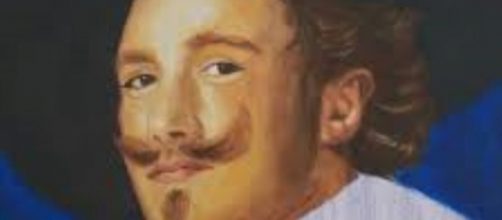There’s nothing laughable about Old Masters’ attention to religion and mythology. Maybe that’s why 17th-century portraitist Frans Hals was so popular. People needed to laugh. Smiling faces mark his work and not that secret smile stuff that made Mona Lisa famous. He pictured grins so wide that often you can see teeth. That good humor is on display at the Frans Hals Museum in the Netherlands city of Haarlem aptly titled “The Art of Laughter.”
Toothpaste smile
Hal’s brushwork is perfect for the high-spirits of his portraits. He applied color with feather strokes to lend that casual cast.
But while his technique looks unstudied, even impromptu, you can see how penetrating his observations were. I’m thinking of the likeness of Willem Coymans that describes his sleeves so full of loose strokes that they seem slap-dashed. But the deadened eyes, heavy lids, and listless hand make clear Hals’ close scrutiny. In a word, Coyman was drunk - something the painter knew a lot about. As reported by Arnold Houbraken, an art historian in his time, Hals was “filled to the gills every evening.” Why? No one knows. He had eight children. Maybe that had something to do with it.
Not kidding
Even so, Hals’ painting style - a kind of Impressionism before its time - had nothing to do with his besotted state.
You have only to look at his portrait of, say, “Laughing Cavalier” to know how painstakingly detailed he could be. (Check out the stitching on the figure’s sleeve). So the impulsive look of his paint strokes was intentional. In fact, his technique made history because he discarded the Old Master’s method of applying pigment – layering color over an undercoat for that extra smooth effect – and instead painted directly on the surface. Houbraken described Hals at work this way: “It was Hals’ custom to lay on the paint in his portraits thick and wet, then to apply the visible brushstrokes later saying the words, ‘Now to give it the master’s touch.’”
Pie-eyed
But, Houbraken didn’t let up on referencing Hals drinking habits, offering a lengthy account of how his students felt compelled to keep an eye on him when he was in a stupor, even to carrying him home from the tavern to keep him from harm.
The narration went on about how one student, in particular, Adriaen Brouwer, got his classmates to prank the inebriated artist because they knew his nightly routine included saying a prayer before collapsing onto his bed: “Dear Lord, carry me soon up to your high heaven.”
Game changer
With that in mind, the students made a hole in the ceiling directly over the artist’s bed and tied one end of a rope to it while holding the other end so when Hals uttered his prayer, they yanked the bed up, which spurred Hals to plead, “Not so fast, Lord, not so fast.” This was the last time he uttered that prayer. But here’s the thing. One look at his portrait “The Laughing Cavalier” and none of it matters. Does it?


